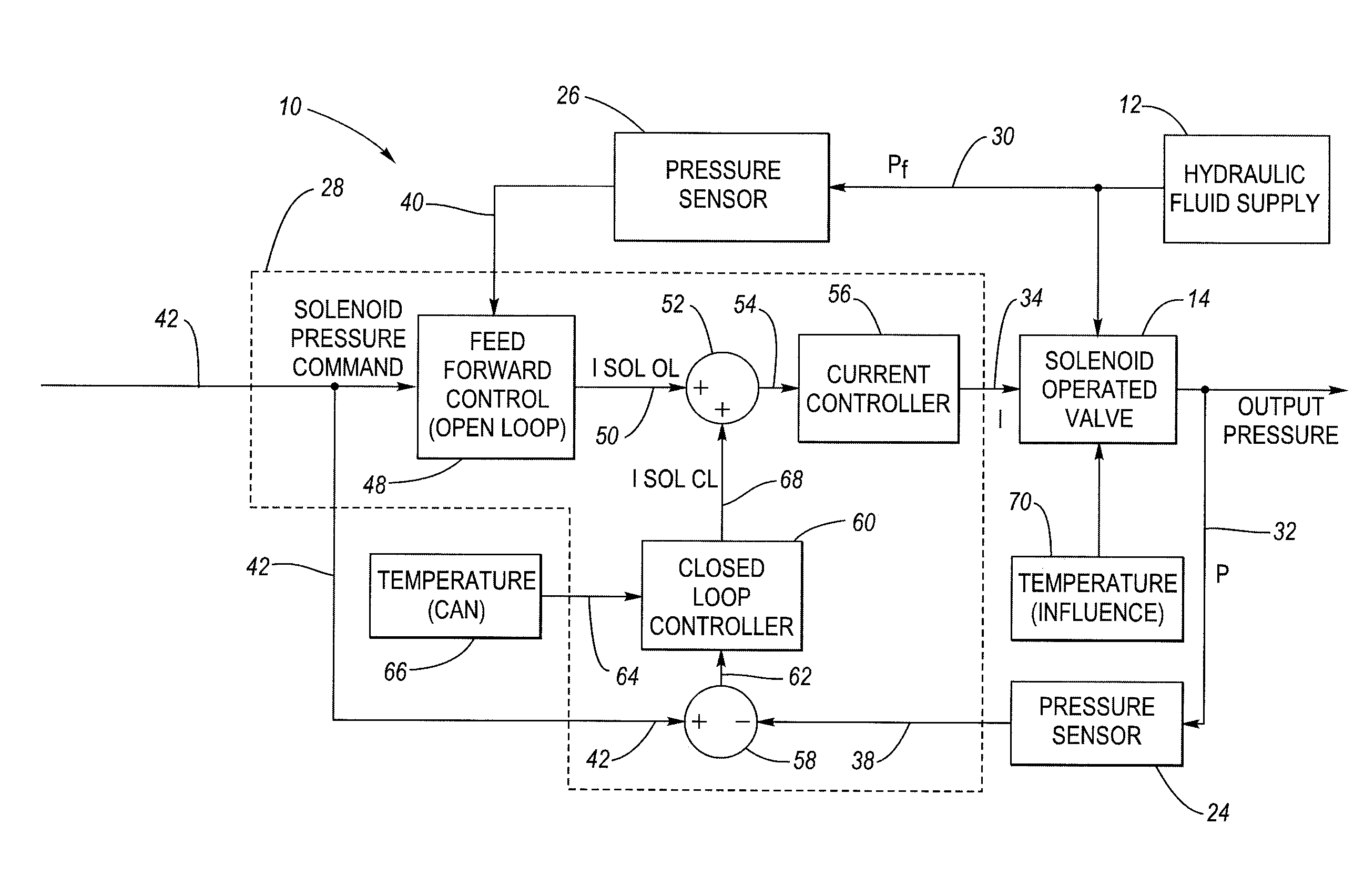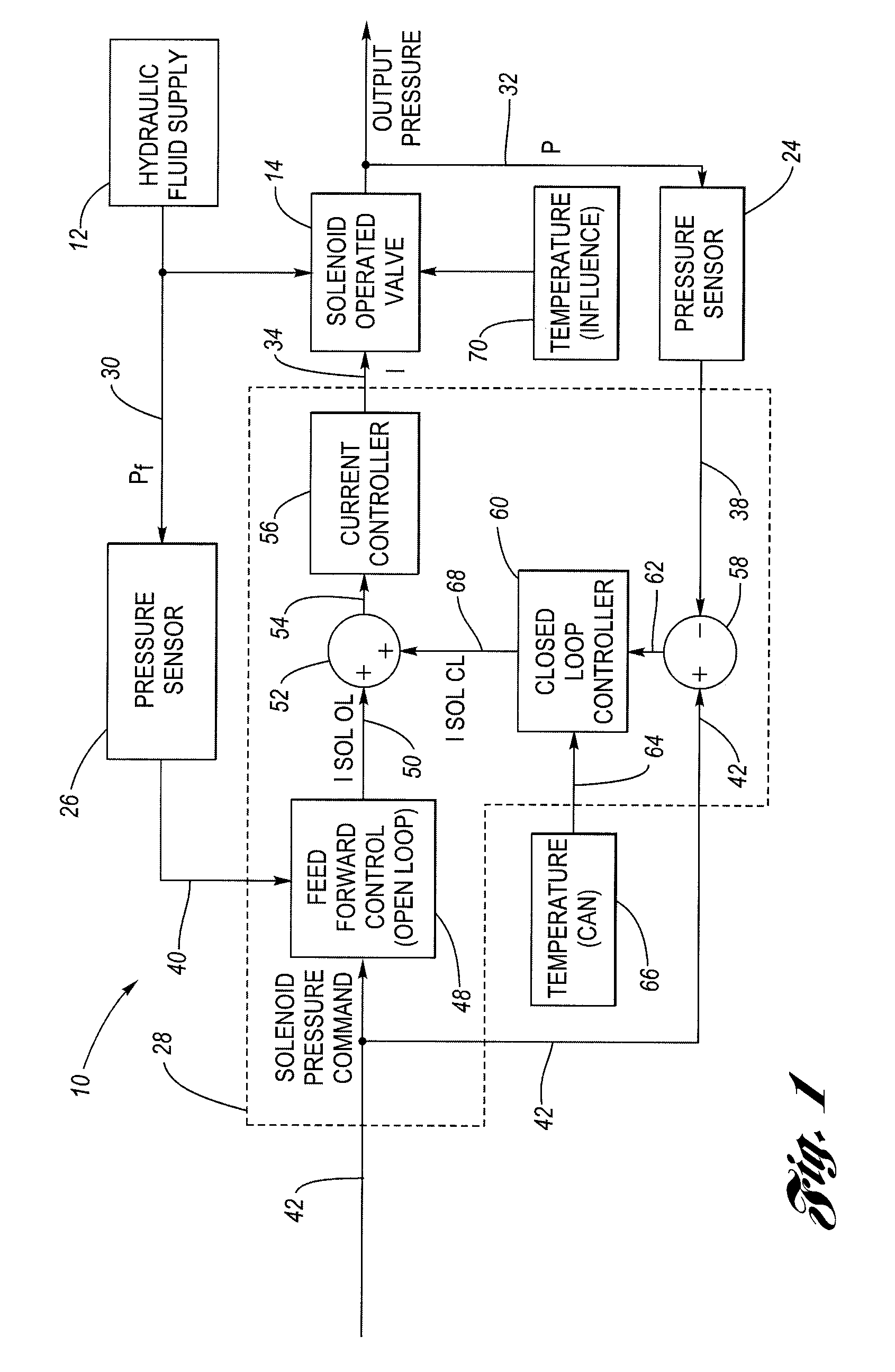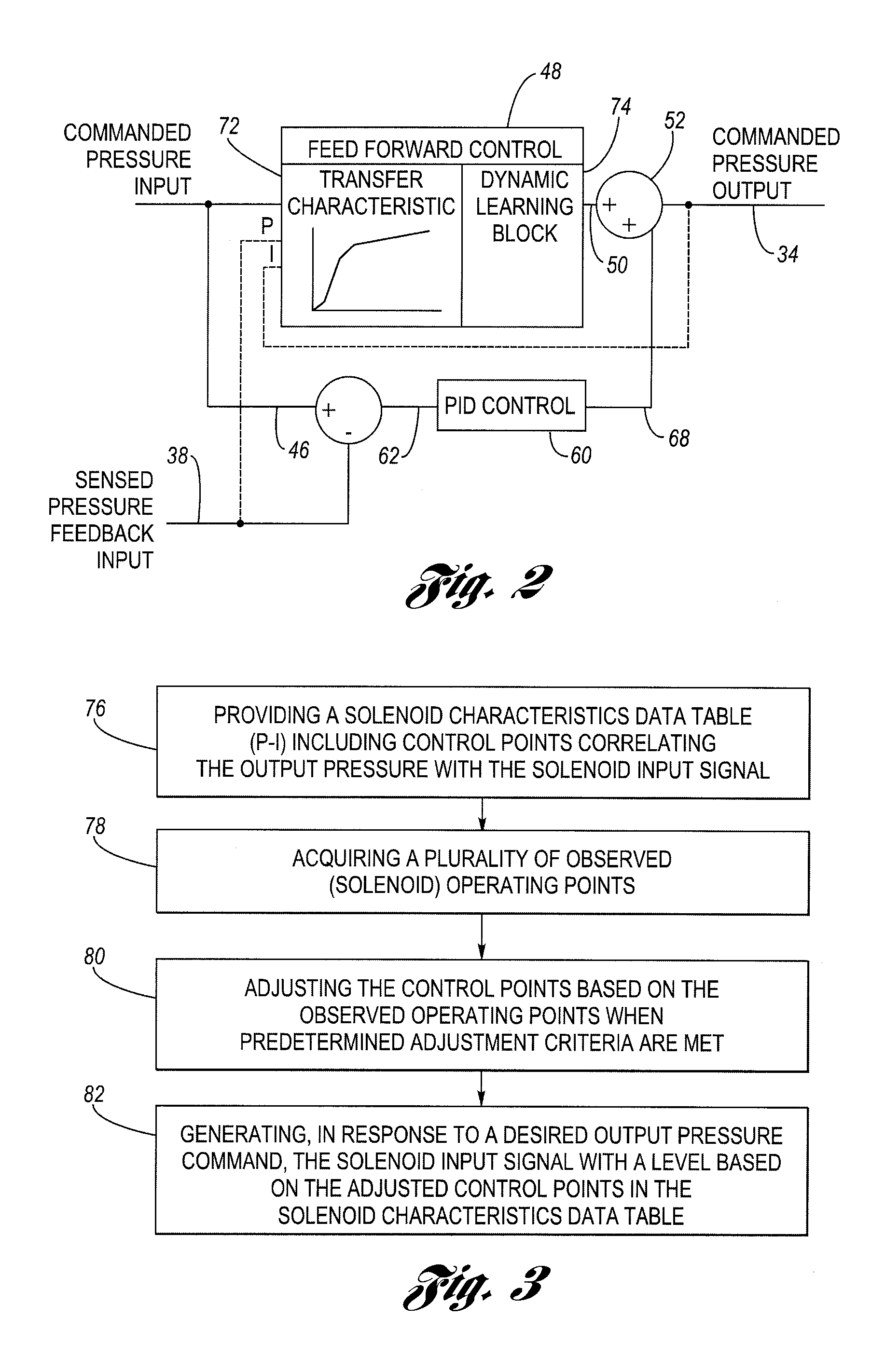Method for real-time learning of actuator transfer characteristics
a technology of actuator transfer and real-time learning, applied in the field of fluid pressure control, can solve problems such as insufficient energy availability, and achieve the effects of reducing output errors, increasing variation, and more accurate forward control signals
- Summary
- Abstract
- Description
- Claims
- Application Information
AI Technical Summary
Benefits of technology
Problems solved by technology
Method used
Image
Examples
Embodiment Construction
[0023]Referring now to the drawings wherein like reference numerals are used to identify identical components in the various views, FIG. 1 is a block diagram of an environment in which both aspects of the invention may be practiced. FIG. 1 shows a control system 10 for closed-loop hydraulic fluid pressure control. The system 10 includes a fluid supply 12 and is configured generally to control an output pressure of a solenoid-operated valve 14. While the invention will be illustrated in the context of FIG. 1, it should be understood that this is exemplary only and not limiting in nature. One of ordinary skill in the art will recognize a variety of additional or alternative useful applications of the invention. For example only, the invention may be suitable for use in controlling a clutch pressure in an automatic speed change transmission for an automotive vehicle. Additionally, more broadly, the invention may be applied to any actuator having an input-versus-output transfer characte...
PUM
 Login to View More
Login to View More Abstract
Description
Claims
Application Information
 Login to View More
Login to View More - R&D
- Intellectual Property
- Life Sciences
- Materials
- Tech Scout
- Unparalleled Data Quality
- Higher Quality Content
- 60% Fewer Hallucinations
Browse by: Latest US Patents, China's latest patents, Technical Efficacy Thesaurus, Application Domain, Technology Topic, Popular Technical Reports.
© 2025 PatSnap. All rights reserved.Legal|Privacy policy|Modern Slavery Act Transparency Statement|Sitemap|About US| Contact US: help@patsnap.com



